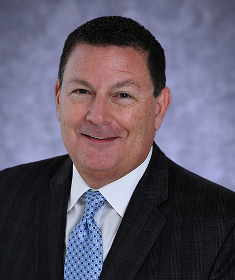Learning and Development as a Strategic Voice in the Organization
(18 de octubre de 2016)
Recently, I was leading a round table for senior leaders in learning and development (L&D). While this particular session was in India with a mixed industry group, the location and group dynamics aren’t significant. I have presented this same topic in China, the United Kingdom, and the United States, and the experience has been the same. We start the session by asking the question, “What challenges do you face in being a strategic voice in your organization?” The responses are typically the same: “We are the first function to get cut.” “I’m just an order taker.” “I feel like I can only talk about training.” “I can’t get the attention of executives.”
As organizations strive to grow their business and meet their clients’ needs, L&D professionals play a vital role in creating and implementing talent development solutions for their organizations. In a recent study by Deloitte, human capital strategy was viewed by many CEOs as one of the top priorities for growth, presenting an exciting opportunity for learning professionals to take a critical role in developing an organization’s human talent.
To address this crucial role of connecting talent development to an organization’s complex growth strategies, L&D must strategically go beyond the need expressed by one person, one department, or one executive and help to define what the business truly needs. This requires elevating yourself to a trusted L&D adviser and true partner with other strategic leaders inside your organization, and focusing on discovering business needs and connecting them to the talent development needs of the people within your organization.
Let’s explore three key principles that point the way to becoming a trusted L&D adviser.
Creating the Trust in Trusted L&D Adviser
Successful L&D professionals know that if you don’t have strong, trusting relationships within your organization, you won’t be seen as a trusted L&D adviser, and you won’t be successful. First and foremost, creating a trusting relationship requires the right mindset. You must truly believe that your job is to help advance the business. L&D professionals whose actions focus only on their function will be perceived as only being interested in training, not the company’s business needs.
Facilitate the Buy-In Process
The best way to facilitate buy-in is to refrain from presenting your pitch about the latest research on training approaches. Rather, focus on helping your internal customers buy in. The trusted L&D adviser helps internal customers see that you are focused on helping to solve the issues they face through talent development support.
Addressing your internal customers’ needs requires:
- helping your internal customers discover the urgency behind their needs and defining the problems that have to be solved
- helping internal customers see how solutions address their need and add value
- helping internal customers gather support for solutions within the organization, creating alignment for action.
Helping internal customers get buy in cannot be done by following an L&D-centric process; it requires a two-way conversation between your internal customers and you—the trusted L&D adviser who can understand the problem, identify the urgency, and agree upon a solution.
Making Sense of Complexity
The good and bad news is that there is an infinite amount of information available at everyone’s fingertips. The responsibility of a trusted L&D adviser is to help internal customers make sense of this complexity and cut through the clutter to find the right solution to their problems. The discipline of the trusted L&D adviser is to bring forth your expertise and link the identified solution to the advantages and benefits for internal customers. By making sure there is a clear and direct connection from your recommendation to advancing the internal customers’ business issues, you can make sure you are adding value to their business priorities.
As L&D professionals, we appreciate a clear process. So, to become a more strategic L&D professional, you should follow these key steps:
- Take ownership for creating trust.
- Facilitate the customers’ buy-in process.
- Make sense of complexity by making a clear and direct connection between your recommendations and advancing the business issues for your internal customers.
Your efforts will produce ongoing, long-term relationships that present multiple opportunities for you to be a strategic voice inside your organization.








 Por favor, complete este formulario para suscribirse para recibir artículos y ponencias.
Por favor, complete este formulario para suscribirse para recibir artículos y ponencias.




